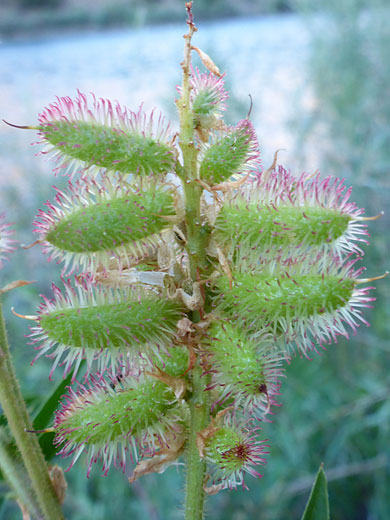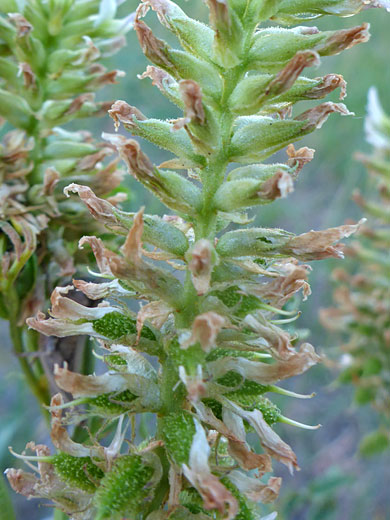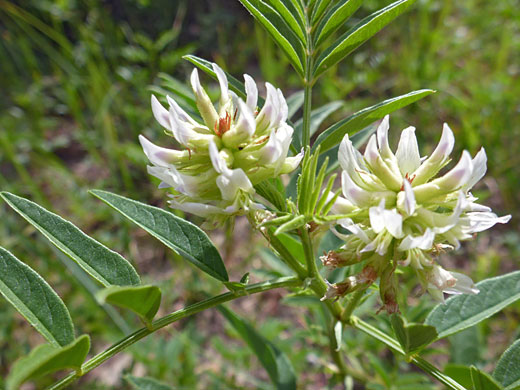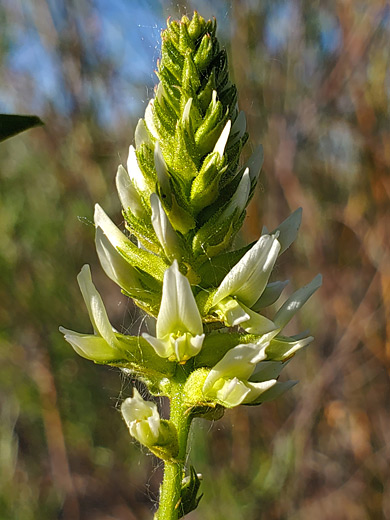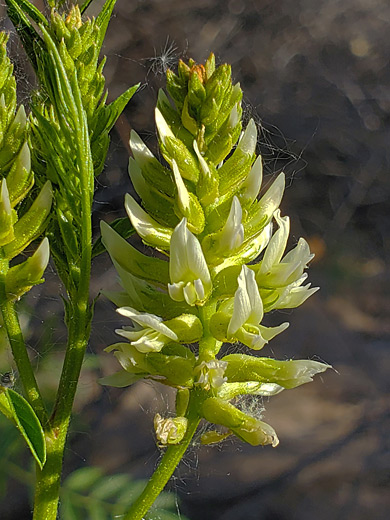
White petals and light green sepals - glycyrrhiza lepidota at Deerlodge Park, Dinosaur National Monument, Colorado
Common name:
American licorice
Family:
Scientific name:
Glycyrrhiza lepidota
Main flower color:
Range:
All the western states; only small areas in Texas
Height:
Up to 4 feet
Habitat:
Moist areas; meadows, riverbanks, around springs, from near sea level to 7,500 feet
Leaves:
Up to 8 inches long, divided into between 13 and 19 oblong to lanceolate leaflets, these up to 2 inches long
Season:
April to June
Glycyrrhiza lepidota is found across most of the western states though only in specific areas, generally moist places, often close to water. The inflorescence is an elongated cluster containing between 20 and 50 flowers. Flowers have a light green, bell-shaped calyx, widest around the middle, divided into narrow lobes for about half its length. The outside of the calyx has a covering of short, glandular hairs. Petals are white to cream-colored; the upper banner petal is largest, and angled upwards, while the smaller wing and keel petals project outwards. Each flower is subtended by a narrow bract, which soon withers.
Fruits are distinctive; green, oblong, spreading pods, half an inch long, covered by hooked bristles, white at the base, often pink towards the tip. Pods become brown as they wither. Stems and leaves are hairless. The lower surfaces of the leaflets are dotted with small glands.
Fruits are distinctive; green, oblong, spreading pods, half an inch long, covered by hooked bristles, white at the base, often pink towards the tip. Pods become brown as they wither. Stems and leaves are hairless. The lower surfaces of the leaflets are dotted with small glands.
All Contents © Copyright The American Southwest | Comments and Questions | Contribute | Site Map


